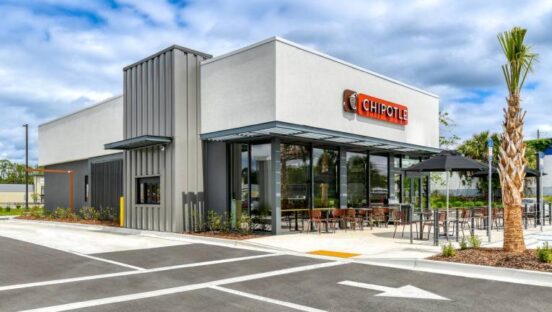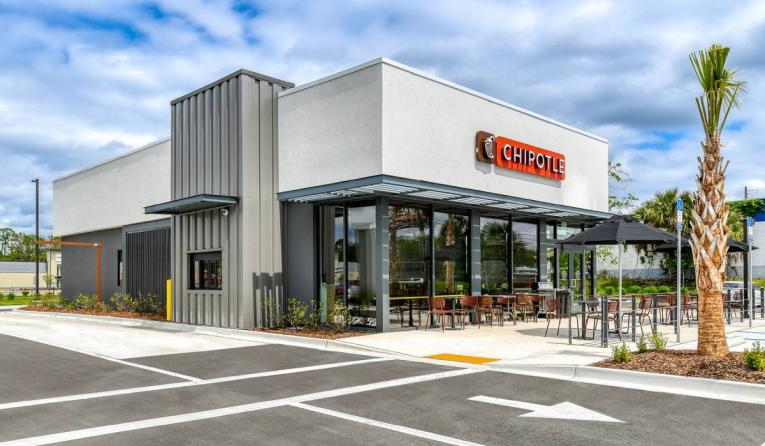The lawsuit filed on April 4, 2023 by Chipotle against competitor sweetgreen’s sale of a “Chipotle Chicken Burrito Bowl” highlights the risks of adopting a mark that is on the descriptive side of the trademark hierarchy and touches on the difficulty of trying to assert ownership over a menu item. Although it appears that the parties have reached a tentative settlement, the lawsuit would have tested the outer limits of Chipotle’s trademark rights. The lawsuit raises issues that every restaurant should be aware of when choosing its house mark and naming menu items.
First, what is a trademark?
A trademark can be a word, phrase, logo, design, shape, color or virtually anything used to identify the source of a product and distinguish it from competitors’ products. More than one trademark may be used in connection with a product. For example, ALL-AMERICAN CLUB® and FOOTLONG PRO® are both trademarks owned by Subway and used in connection with a sandwich.
Trademarks represent the goodwill and reputation of a product and its source. Its owner has the right to prevent others from trading on that goodwill by using the same or a similar trademark on the same or similar products in a way that is likely to cause confusion as to the source, origin or sponsorship of the products.
Not all trademarks are created equal.
There is a hierarchy of trademarks, which exist on a spectrum of strength and protectability. At one end are fanciful marks, which are made-up words such as QUIZNOS®, and arbitrary marks such as JACK IN THE BOX®, which are real words but have no meaning in connection with the goods or services to which they are applied. Fanciful and arbitrary marks are the strongest marks and are afforded the highest level of protection.
At the other end of the spectrum are generic terms which have no trademark significance and are not entitled to any protection. Examples include “Pizza” for pizza or “Apples” for apples. A generic term answers the question – what are you? Importantly, if a trademark owner does not police the use of its mark, it may become generic in relation to the goods or services. This means that the owner will lose the exclusive right to use the word as a trademark. Examples of marks that have become generic over time are ASPIRIN for analgesics or ESCALATOR for moving stairways. The restaurant industry is replete with menu items that could have become famous trademarks for signature dishes, but are now generic terms. For example, “Caesar Salad,” “White Pizza,” and “Bundt Cake” could have been protectable marks if they had been policed since their inception and not adopted by the entire industry.
In between arbitrary/fanciful marks and generic marks are suggestive and descriptive marks, which are afforded weaker protection. Suggestive marks are marks that, with some imagination, are suggestive of the goods/services or a characteristic thereof. Examples of suggestive marks are SWEETARTS® for candy or LA CHAMPAGNE for restaurant services. In comparison, descriptive marks actually describe the goods/services or a characteristic thereof. Examples of initially descriptive marks that have since acquired distinctiveness as trademarks are JAVA ROAST® for coffee and CALIFORNIA PIZZA KITCHEN® for restaurant services. Descriptive marks are only protectable if the owner can prove the mark has acquired secondary meaning, i.e. distinctiveness, as a trademark. That is, when consumers hear the terms in a descriptive mark, they think of only a single source of the goods or services. For example, when consumers hear the mark CALIFORNIA PIZZA KITCHEN®, they are likely to associate the mark with that specific restaurant.
Marks in the higher end of the hierarchy are easier to register and easier to protect. Meanwhile, marks that are descriptive (like Chipotle’s mark) are entitled to less protection and are more likely to be frequently used by third parties. Taking a mark from “descriptive” to “protectable” can require an enormous investment of time, energy and money. These resources must be invested in a steady advertising campaign to educate the public that the descriptive phrase does not merely describe the product, but functions as a mark designating a specific source. The brand owner must also take steps to stop others from using the mark, but this can be difficult until the brand owner can demonstrate that consumers recognize the phrase as a trademark.
Could Chipotle have stopped the Chipotle Chicken Burrito Bowl?
The parties appear to have reached a tentative settlement agreement whereby sweetgreen re-named its bowl the “Chicken + Chipotle Pepper Bowl.” However, if a settlement had not been reached, the lawsuit would have provided insights into the outer limits of restaurants’ trademark rights in arguably descriptive marks, particularly with respect to menu items.
sweetgreen’s strongest defense would have been that it could not be liable for trademark infringement because it was not using the word “chipotle” as a trademark. Instead, it was using “chipotle” only to describe the ingredients/characteristics of its menu item. The fair use doctrine permits use of a descriptive mark in its descriptive manner to describe an item or ingredient, but not in a source-identifying manner. Fair use is a defense to trademark infringement. While Chipotle could argue that sweetgreens’ occasional use of “chipotle” with capitalized typeface suggested that sweetgreen was using “chipotle” as a trademark, other versions of sweetgreen’s marketing (including certain marketing shown in the Complaint) use “chipotle” in all lowercase letters in sentences. In those instances, the word “chipotle” was clearly used to describe the entree. Thus, sweetgreen would have had reasonable arguments that its use of the word “chipotle” was protected fair use.
In tandem with its fair use argument, sweetgreen may also have sought cancellation of certain of Chipotle’s trademark registrations covering food, and argued that the word “chipotle” is generic for food featuring chipotle peppers or sauces. On that theory, Chipotle would not be entitled to any trademark protection for the CHIPOTLE mark in relation to food items featuring those ingredients (as compared to restaurant services, for which CHIPOTLE is less likely to be considered generic). The vast number of third-party uses of the word “chipotle” in relation to food items would support that argument. sweetgreens could argue that Chipotle’s single CHIPOTLE trademark registration covering food items (rather than restaurant services) was issued in error because it is generic, even though Chipotle submitted evidence that it had sufficiently advertised the word to establish consumer recognition. When a word is truly generic for the product it can never function as a trademark, regardless of the amount of advertising. Chipotle had filed an earlier application for the CHIPOTLE mark that the USPTO’s Examining Attorney found (i) had not acquired distinctiveness with respect to food items at that time and (ii) was generic and therefore wholly refused in connection with vegetables. These facts would support both that sweetgreen’s use of the word “chipotle” was fair use and that the word may be generic for food items.
In the alternative, sweetgreen could have also argued that even if the court found that “chipotle” was generic only for the peppers themselves, and that it was possible for CHIPOTLE to function as a mark for other food items, it is still extremely descriptive and only entitled to the weakest protection. sweetgreen could then argue that the presence of its SWEETGREEN house mark eliminated any potential confusion created by its use of “chipotle” in the name of its menu item. However, in view of Chipotle’s longstanding trademark registrations and widespread use of the mark, as well as the significant advertising, sales, and survey evidence that Chipotle would likely be able to submit to demonstrate the fame of its mark, Chipotle may have been able to prove that it was entitled to a somewhat broad scope of protection. Still, sweetgreen’s prominent SWEETGREEN branding next to or in the vicinity of “Chipotle Chicken Burrito Bowl” may have avoided any finding of trademark infringement given consumers most likely would understand the bowl was being offered by sweetgreen and would not think it was associated with Chipotle.
What are the takeaways for restaurants?
There are a number of takeaways for restaurants from this lawsuit and settlement. First, restaurants should try to select arbitrary or fanciful marks if they wish to minimize the chance that their competitors will use similar marks. If a restaurant chooses a descriptive or suggestive mark, they should be ready and willing to consistently watch for and stop others from using similar marks. Brand owners adopting descriptive marks must also be prepared to live with descriptive fair use of the mark by competitors. Second, restaurants with suggestive or descriptive marks like Chipotle do need to stop others from using similar marks. If they do not, they risk their trademark becoming diluted or weak, or possibly losing exclusive rights in their mark altogether. This is not Chipotle’s first lawsuit over a menu item, and likely will not be its last. A brand owner must be vigilant and police its mark, especially a descriptive one, to ensure the mark does not become generic and unenforceable. This lawsuit could have been a high-profile attempt by Chipotle to show it actively polices (and thus has maintained the strength of) its brand. Finally, restaurants should be mindful of third-party trademark rights in both selecting and marketing menu items, especially if the menu item name will be difficult or costly to change in the event a conflict arises.
Chipotle’s allegations against sweetgreen’s allegedly infringing use (Chipotle Chicken Burrito Bowl) and the use that Chipotle appears to have approved under the tentative settlement (Chicken + Chipotle Pepper Bowl) illustrate some of the issues to consider. At the same time, it is not a sign that every restaurant needs to remove all references to chipotle from their menu items. sweetgreen’s use of “chipotle” included some aggravating factors that likely compelled Chipotle to sue. For example, using capitalization, larger font size, noticeable or similar typeface, a similar color scheme, or most importantly – first position placement of the term “chipotle” in the menu item name. Restaurants avoiding these aggravating factors are less likely to find themselves on the wrong end of a lawsuit. There is also a greater risk of conflict when a restaurant uses the mark of a direct competitor or for a nearly identical product, as was the case here with sweetgreen’s use of “chipotle” in connection with a competing chicken burrito bowl.
While it questionable whether Chipotle could have ultimately succeeded on the merits in this lawsuit, Chipotle’s claims are a useful reminder to those in the industry of the importance of accounting for third-party rights in crafting menu item names and potentially clearing such names with outside counsel.
Jonathan Hyman and Kate McMorrow are attorneys at Knobbe Martens in Los Angeles. Knobbe Martens is one of America’s largest intellectual property and technology law firms, and a recognized leader in the field of trademark law. Knobbe Martens provides strategic trademark, branding and protection counseling for major brands across numerous industries, including in the food and beverage space. For any questions regarding this article or to discuss Knobbe Martens’ brand protection and enforcement services, please contact Jonathan (jonathan.hyman@knobbe.com) or Kate (kate.mcmorrow@knobbe.com).














